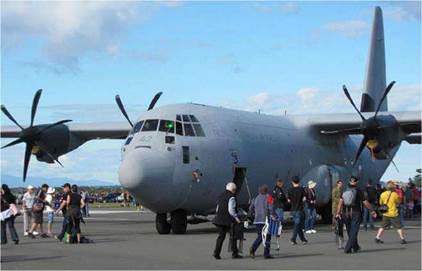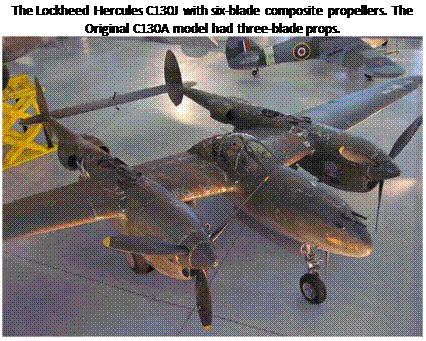Five-blades or Six?
As mentioned above, it became necessary over the years to increase the number of blades mounted on a prop to absorb the greater horsepower of newer types of engines. Four-blade props became more common and still are, and later five-blade props were produced. Due to interference caused as the air flow cascades over the following blades, it was found that five – blades were the maximum that could be used before propeller efficiency deteriorated. However, where the metal prop was limited to five-blades, props with six-blades are now powering modern turboprop transports and cargo planes. Composite materials enabled six-blades to be mounted on each propeller hub, generating greater thrust more efficiently than a metal prop could ever achieve. For example, the BAe ATP and later models of the Aerospatiale ATR and also the latest Lockheed Hercules C130J all have six-blade composite props, to name just a few.
To this author’s knowledge, the only six-blade metal prop to fly (not counting contra-rotating props) was a pusher prop mounted on the Japanese Kyushu J7W1 Shinden that was being developed at the end of the Second World War, but never saw combat service.
 |
 |
The counter-rotating propellers on this Lockheed P-38
Lightning are clearly visible. This aircraft is located in
the Udvar-Hazy Center, near Washington D. C.











